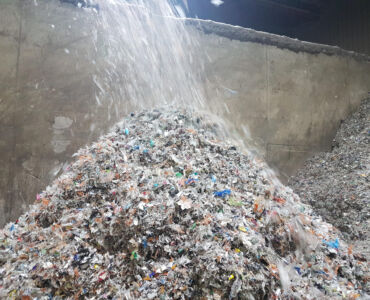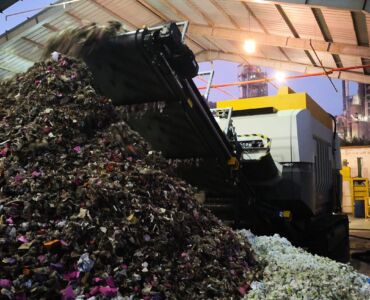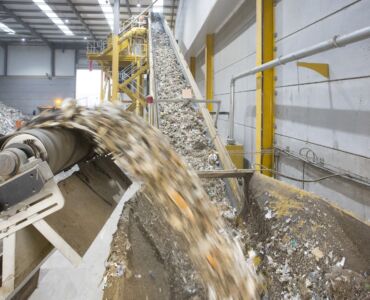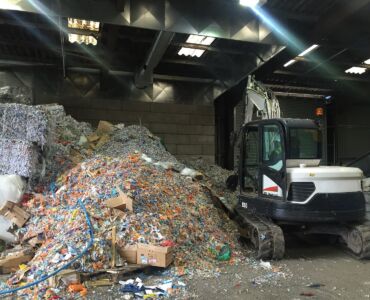As a growing number of countries globally acknowledge the resource potential and environmental efficacy of alternative fuel production, RDF and SRF manufacturers are quite rightly looking for ways to strengthen the commercial robustness of their facilities. From boosting the energy efficiency of their waste handling lines to maximising yield, there are many opportunities to increase margins and operators shouldn’t be ashamed of seeking out the wealth in waste.
Gary Moore from UNTHA UK, explores…
—
While it’s perhaps hard to recollect the stories that appeared in the world pre COVID-19, topics such as climate change, single use plastics and waste-ridden oceans have frequently graced the headlines over the last couple of years. As a result, organisations are coming under increasing scrutiny to boost their environmental agendas. And rightly so – these ‘green’ matters aren’t going anywhere. We’ve a planet to protect and everyone should ‘do their bit’.
Manufacturers of alternative fuel are certainly contributing to the world’s resource security, and the more scrupulous of producers will also have a keen eye on how to continually improve the eco efficiency of their facilities, to further enhance the net environmental gain of their operations.
But at the same time as being environmentally conscious, there is no shame in seeking to be commercially robust too. Profit is not a dirty word. And, in fact, being more resource efficient and more profitable often goes hand in hand.
So, how can operators increase their margins?
Flexible technology
The more flexible an asset, generally, the more diluted the market risk for the operator and the greater the potential return on investment. If an RDF/SRF shredder can handle a variety of input materials, for example, and manufacture fuels to different end user specifications in terms of particle size, calorific value and moisture content, the market naturally opens up. If an offtaker seeks heightened material segregation at source and greater particle homogeneity for burn efficiency, the manufacturer may even be able to command a higher price for the fuel.
Organisations unsure of their lines’ capabilities should speak to their shredder suppliers about this versatility, as cutting configurations should be achievable in under one hour, to ensure minimal operational disruption.
Savvier production methods
Generally, alternative fuel production in a single pass is now a priority, hence the uplift in conversations surrounding subjects such as ‘quick SRF’. This methodology limits the initial capital investment, ongoing running costs and maintenance intensity, which maximises potential manufacturing margins without jeopardising output quality. In fact, a cement grade fuel should now be attainable even from an incredibly simple processing line, with only a one-step shredder, conveyor belt and magnet.
When the technology is driven by energy-efficient electric motors, rather than diesel-hungry alternatives, the savings are greater still – both in terms of fiscal and environmental gain.
Construction and commercial waste management specialist Rabbit Waste Management Ltd used to operate a diesel-driven mobile shredder, but the switch to an electric driven alternative resulted in 60% reduced energy consumption and cost savings of approximately £60,000 per year. The firm now powers the shredder using electricity generated from its WtE plant. The parasitic load of the site is 1MW meaning the remaining 4MW can be exported to the grid.
Such savings benefits aren’t limited solely to RDF and SRF production either.
When manufacturing biomass, Wiltshire-based Crapper & Sons was previously processing wood using one high speed shredder fed by one slow speed shredder. But limited resistance to foreign objects within the waste stream, was resulting in unmanageable machine breakdowns and operational downtime.
The switch to a single-step electric drive mobile shredder means Crappers can now transform 30 tonnes of wood waste per hour into a P63-specification biomass fuel, with less than 6% <10mm fines and 20% more uptime. The resulting product is being sold to board mills and biomass plants across the country, with approximately 18 tonnes of clean metals also being extracted from the magnet belt per week for resale.
Ssssshhh…shredders
The Control of Noise at Work Regulations 2005 govern the protection of employees’ hearing, so ear defenders have long been essential within industrial waste plants. However, savvier firms have started to demand more, keen to cap the number of decibels that their plants operate at. As a result, facilities are now being designed to run below the first dB(A) action point. Because some waste shredders can now function below 80 decibels, for example, hearing protection is not necessary, at all.
Not only does this shield operators from the debilitating effect of prolonged exposure to excessive noise – it also supports morale, sustains productivity and, in the simplest of commercial terms, saves money on ear defenders. It also helps operators navigate planning constraints and community complaints, as plants need no longer disrupt neighbouring residents.
Safe operations
Fires within the waste industry are sadly common, therefore an RDF/SRF production line containing in-built fire suppression technology will not only protect the ongoing operational security of the line as well as the safety of personnel – it could contribute to reduced insurance premiums too, particularly if the technology is mobile.
Fuel producers should look to procure shredding technology featuring carefully positioned UV, infrared, heat and spark detectors on the hopper and discharge conveyor, for example, to sense when a fire is likely to begin. In the event of a significant temperature increase, extinguishing nozzles, positioned in the same place as the sensors and thus pointing directly at the fire risk, can automatically spray water onto the targeted areas, to help prevent a fire from propagating.
It is even possible to help mitigate the chance of explosions. These are typically caused if a ‘foreign object’ such as an aerosol can bursts due to heat or compression, or if a small spark creates enough of an ignition when it reacts with high volumes of dust. To prevent such scenarios, more responsible equipment manufacturers are again reducing risk ‘by design’. Rotor speeds have been slowed, for instance, to minimise the creation of dust, and lower tip speeds mean the potential for a spark is also lessened. Anti-explosive Atex-specification motors and electronics can be installed too.
Shredding optimisation
It is easy to forget the need for routine inspections on highly-automated technology, as they appear to take care of themselves. But periodic spot-checks of the equipment on an RDF/SRF production line – even one that is working as anticipated – can help to uncover simple optimisation opportunities. The exchange of cutters could achieve a more defined shred for instance, or a speed control adjustment could ensure that the RPM:torque ratio maximises throughputs without impacting on wear. If the level of non-specification fines can be reduced as a result – usually by around 20% – residual material disposal costs will be avoided too.
Downstream sorting equipment should also form part of this audit process, to ensure maximum recyclate extraction and a refined SRF product quality, free from foreign objects.
So, it is possible to be environmentally responsible and commercially savvy. There is wealth in waste, and while we would all rather its creation was prevented at source, the industry must ensure it is effectively dealt with, for as long as it remains a problem. In doing so, we can, together, deliver waste hierarchy compliance, create jobs and hopefully work towards a stronger future for the environment and this industry alike.






